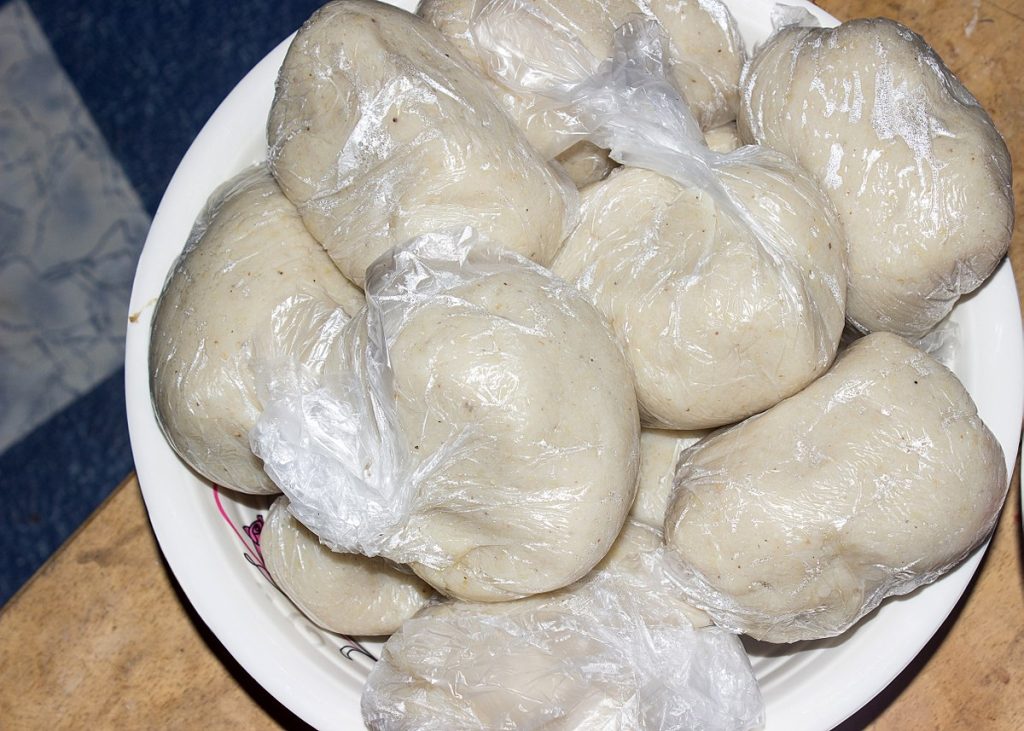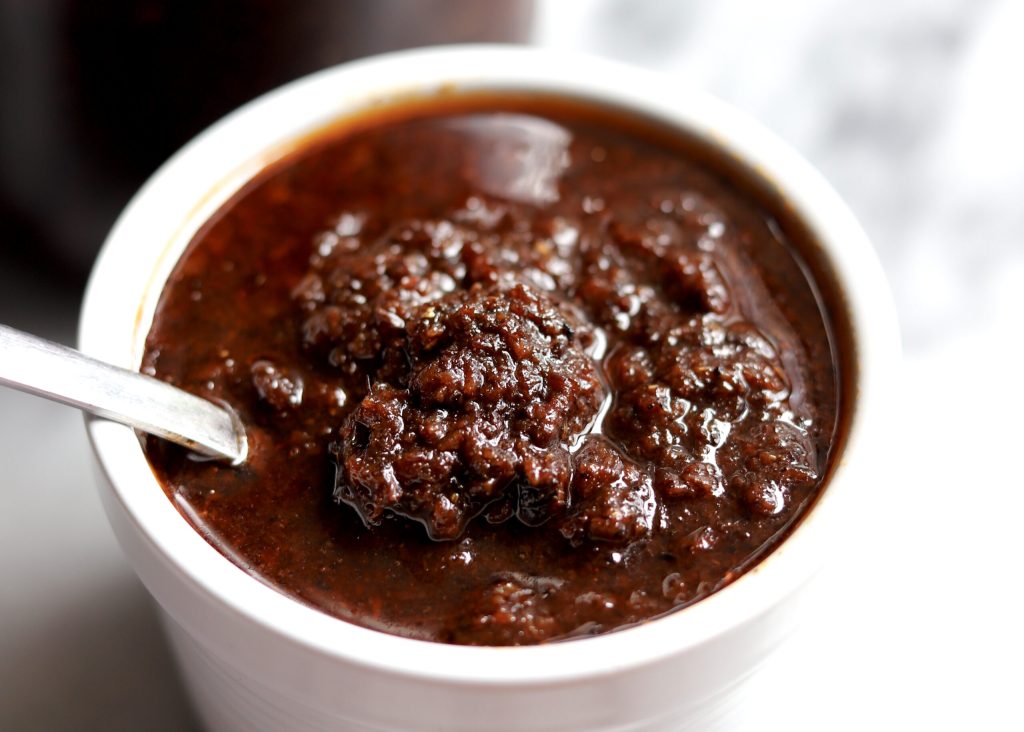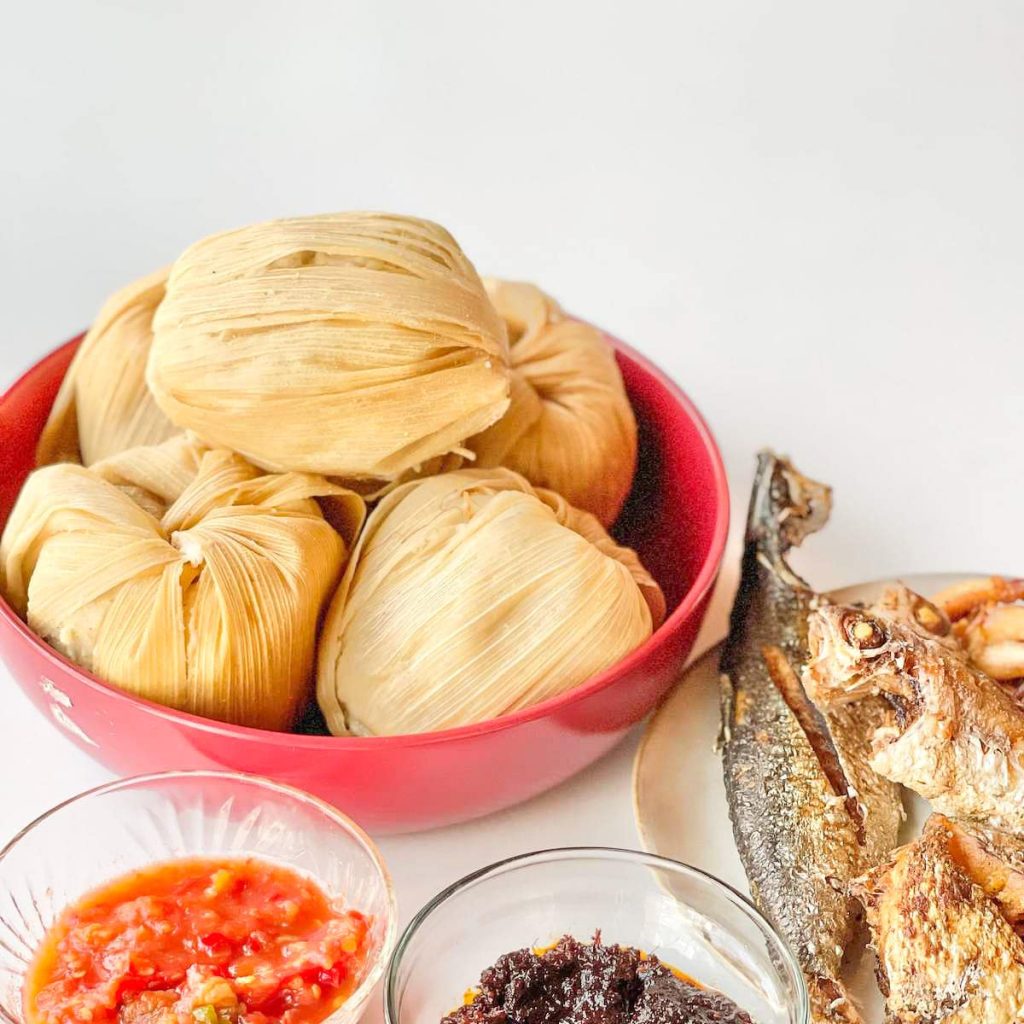Ghanaian Recipes: Banku vs. Fufu, Shito, and Kenkey
Banku is a traditional Ghanaian dish crafted from fermented maize and cassava dough. The preparation involves boiling the banku mixture in water until it attains a smooth, white, paste-like consistency, followed by kneading into a dough. This process is repeated to ensure even cooking of the dough.
Similar to Fufu, which is made from plantain and cassava, Banku is consumed in a comparable manner. It holds cultural significance as a staple in various regions of Ghana and is typically enjoyed with soup, stew, or sauce containing vegetables, meat, or fish. Banku boasts a distinct sour taste and a slightly sticky texture, making it well-suited for dipping or scooping.
While the precise origins of banku remain unclear, it is believed to have been introduced to Ghana by the Ewe people who migrated from present-day Togo and Benin. Over time, banku has gained widespread popularity in different parts of Ghana and is now recognized as a national dish.
Ingredients for Banku:
- Cornmeal: 2 cups
- Cassava dough: 2 cups
- Water: 8 cups
- Salt: to taste

Instructions:
- In a large bowl, combine the cornmeal and cassava dough thoroughly.
- Add 2 cups of water to the mixture and stir well.
- Cover the bowl with a clean cloth and let it sit for 2-3 days to ferment. During this time, the mixture will develop a slightly sour and bubbly consistency.
- After fermentation, add an additional 2 cups of water to the mixture and stir. Knead the dough with your hands until it becomes smooth and elastic.
- In a large pot, bring 4 cups of water to a boil.
- Reduce the heat to medium and gradually add the dough to the pot, stirring constantly to prevent lumps.
- Continue stirring for about 20-30 minutes until the mixture thickens, achieving a smooth and glossy texture.
- Add salt to taste, stirring well.
- Remove the pot from the heat and vigorously beat the mixture with a wooden spoon until it becomes fluffy and elastic.
- Serve the Banku hot, accompanied by soup, stew, or sauce.
These steps provide a comprehensive guide to preparing Banku, a popular Ghanaian dish enjoyed with various savory accompaniments.

Banku and Fufu Differences and Similarities
Banku and fufu are both traditional Ghanaian dishes, but they have differences in their ingredients, preparation methods, and sometimes, their regional popularity. Here are the key distinctions between banku and fufu:
- Ingredients:
- Banku: Banku is made from a mixture of fermented maize (corn) and cassava dough. The fermentation process gives it a slightly sour taste.
- Fufu: Fufu can have different variations, but one common type is made from plantains and cassava. Other variations may use yams, cocoyams, or a combination of different starchy ingredients.
- Preparation:
- Banku: The process involves boiling the fermented maize and cassava dough in water until it forms a smooth, white, paste-like consistency. The mixture is then kneaded into a dough.
- Fufu: The preparation of fufu often involves boiling and then pounding the starchy ingredients to create a soft and stretchy dough. Traditional methods use a large mortar and pestle for pounding, but modern kitchens may use blenders or food processors.
- Texture and Taste:
- Banku: Banku has a distinctive sour taste due to the fermentation process. It has a slightly sticky texture that makes it suitable for scooping or dipping into soups.
- Fufu: Fufu has a smoother and stretchier texture compared to banku. The taste is neutral, allowing it to complement the flavors of the soups or stews it is served with.
- Regional Popularity:
- Banku: Banku is popular in many parts of Ghana, and it is often associated with the Ga-Dangme and Ewe ethnic groups. It is considered a national dish and is enjoyed across the country.
- Fufu: Fufu is also widely consumed in Ghana, and its popularity extends to other West African countries. The specific ingredients used for fufu can vary by region and ethnic group.
In summary, while both banku and fufu are traditional Ghanaian dishes made from starchy ingredients, they differ in terms of their specific ingredients, preparation methods, taste, and regional popularity.
Shito Recipe and its Origin:
Shito, also referred to as shitor din, represents a Ghanaian spicy black pepper sauce crafted using a combination of ingredients such as fish or vegetable oil, ginger, dried fish, prawns, crustaceans, tomatoes, garlic, peppers, and an array of spices. Typically, the ingredients are blended and simmered in vegetable or corn oil for over an hour to achieve the desired consistency of the sauce.
Shito serves as a versatile accompaniment to various dishes, including kenkey, steamed rice, garri, waakye (rice and beans), and banku. It is not uncommon to find individuals pairing it with white bread or spring rolls.
Origin & Cultural Significance:
The term “Shito” originates from the Ga language, where it translates to “spicy.” The blend of spices and fish in Shito can exhibit variations based on the specific region or village, contributing to the diverse versions of this sauce worldwide.
Shito can manifest as either creamy or chunkier, and its spiciness may range from mild to extremely hot, influenced by individual household preferences and regional distinctions.

Ingredients:
- Vegetable oil – 1 ½ cups
- Onions (medium, peeled and sliced) – 3
- Garlic (peeled and cut into smaller pieces) – 4 cloves
- Ginger root – 5 cm
- Scotch bonnet (stalk removed) – 2
- Tomato puree – 2 tbsp
- Dried fish pieces – ½ cup
- Chili flakes/powder – 1 tbsp
- Ground shrimp – ½ cup
- Ground cloves – 1 tsp
- Salt to taste

Instructions:
- Begin by preparing the dried fish. Cut them into smaller pieces, remove the bones, wash them thoroughly, and let them soak in water.
- Heat the vegetable oil in a non-stick pan over medium flame.
- Add sliced onions to the heated oil. Stir constantly until the onions turn translucent and slightly browned (approximately 10-15 minutes).
- Remove the pan from heat and allow it to cool. Drain the soaked fish.
- In a blender, combine the fish pieces, scotch bonnet, garlic, tomato puree, and ginger root. Add the cooled onion-oil mixture and blend into a smooth puree.
- Transfer the blended mixture back into the pan and cook over low flame.
- Add dried shrimp, chili flakes, ground cloves, and salt to the mixture. Stir well and let it simmer. If the sauce appears dry, you can add more oil.
- Simmer the mixture, stirring often to avoid burning. The color will gradually darken during the 20-minute cooking process.
- Once done, set the sauce aside to cool.
- Your Shito sauce is ready! Serve it with dishes like kenkey, waakye, banku, or any other preferred dish.
- You can store the sauce in a closed container in the refrigerator for up to a month.
Note: Shito can vary in texture and spiciness based on personal preference and regional differences. Enjoy this versatile Ghanaian hot pepper sauce with your favorite meals!
Ghana Traditional Dish – Kenkey
Kenkey is a traditional Ghanaian dish made from fermented corn or maize dough. It’s a staple in Ghanaian cuisine and is typically served as a side dish with soups, stews, or sauces. Here’s a basic recipe for making Ghanaian Kenkey:
Ghanaian Kenkey Recipe
Ingredients:
- 2 cups fermented corn dough
- Water (for mixing and steaming)
- Banana leaves (for wrapping)

Instructions:
- Prepare the Corn Dough:
- Obtain fermented corn dough from a reliable source or ferment it at home. To ferment, soak crushed corn in water for about 3 days until it ferments.
- Mix the Dough:
- Place the fermented corn dough in a large bowl.
- Gradually add water while stirring to form a smooth, thick batter. The consistency should be thick but pourable.
- Shape and Wrap:
- Divide the dough into small portions.
- Take a portion of the dough and shape it into a smooth ball.
- Place the ball of dough in the center of a banana leaf and wrap it securely, forming a cylindrical shape. Use twine or banana leaf strips to tie the wrapped dough.
- Steam the Kenkey:
- Set up a steamer or a pot with a steaming basket.
- Place the wrapped kenkey in the steamer and steam for about 2-3 hours. Ensure the water in the steamer is constantly replenished.

- Serve:
- Once the kenkey is cooked, let it cool slightly before serving.
- Unwrap the banana leaves and serve the kenkey with your choice of accompaniments such as fish, pepper sauce, or soup.
Once done, take them out carefully and serve them along with shito, diced or ground red and/or green pepper and fish.
Kenkey is known for its unique taste, which is slightly sour due to the fermentation process. It’s a popular dish enjoyed in various regions of Ghana and is often part of festive occasions and celebrations.
Related Reading GHANAIAN RECIPES: TUO ZAAFI, YAM POTTAGE (ASAANA), AND WAAKYE

